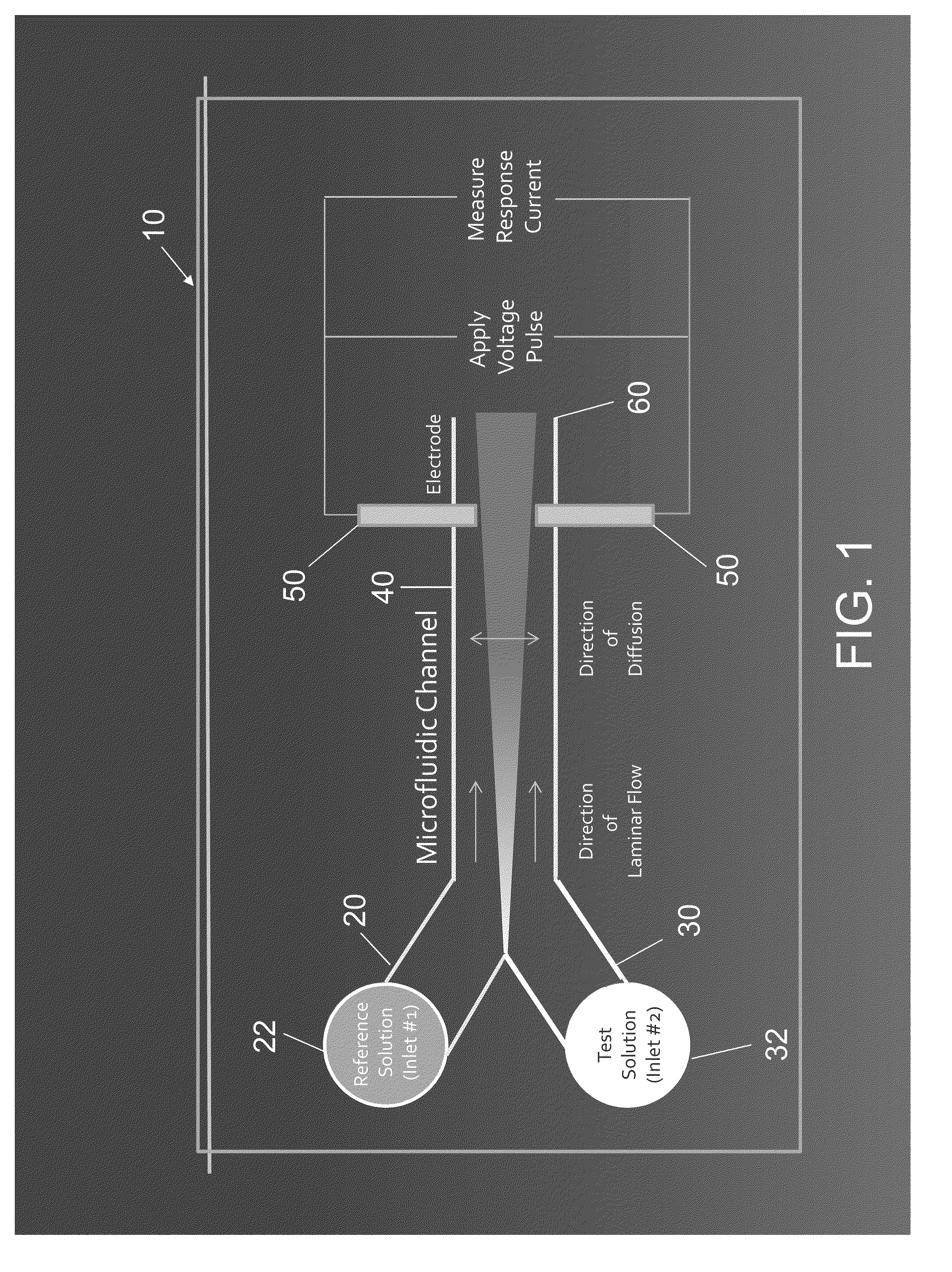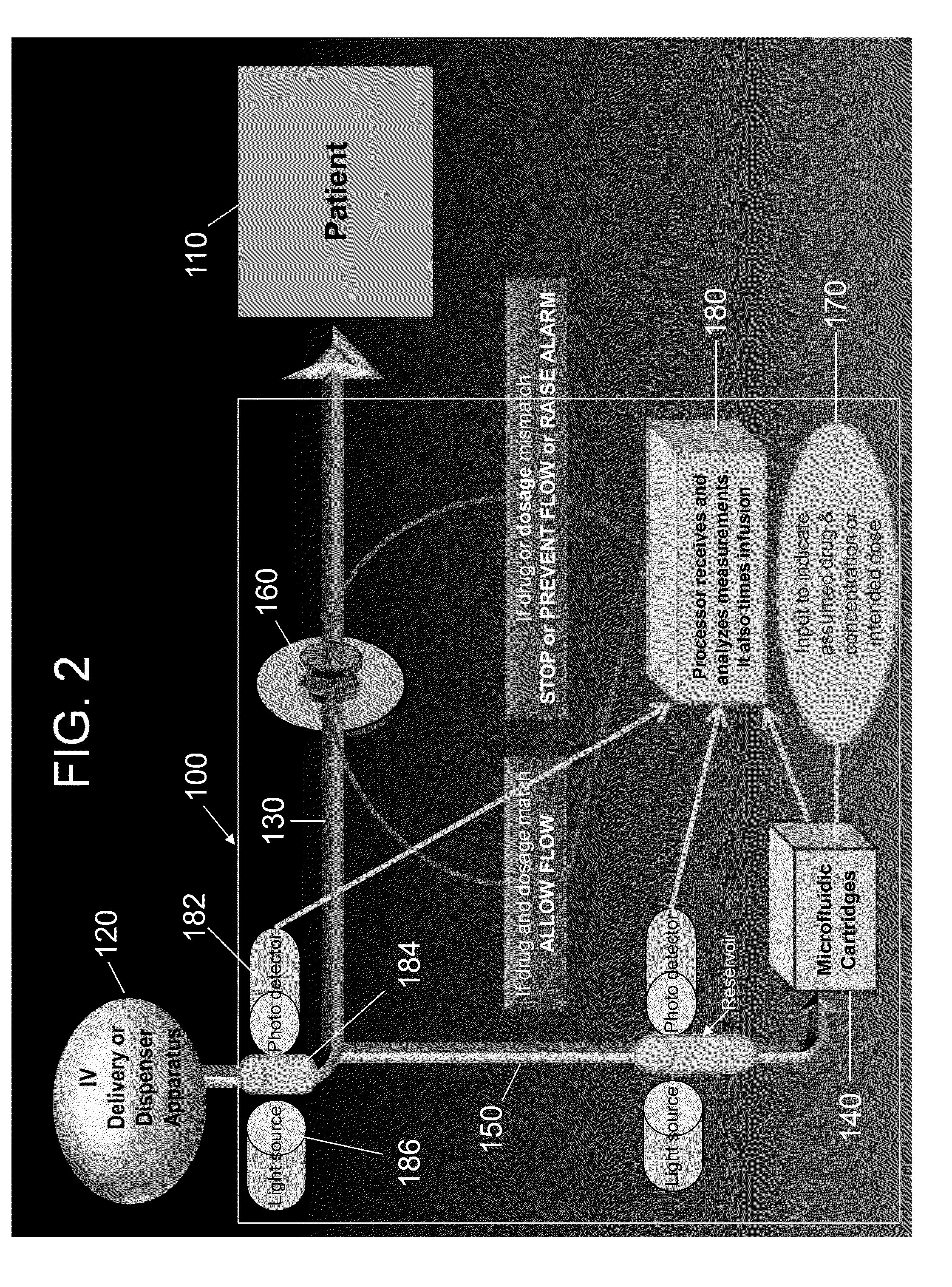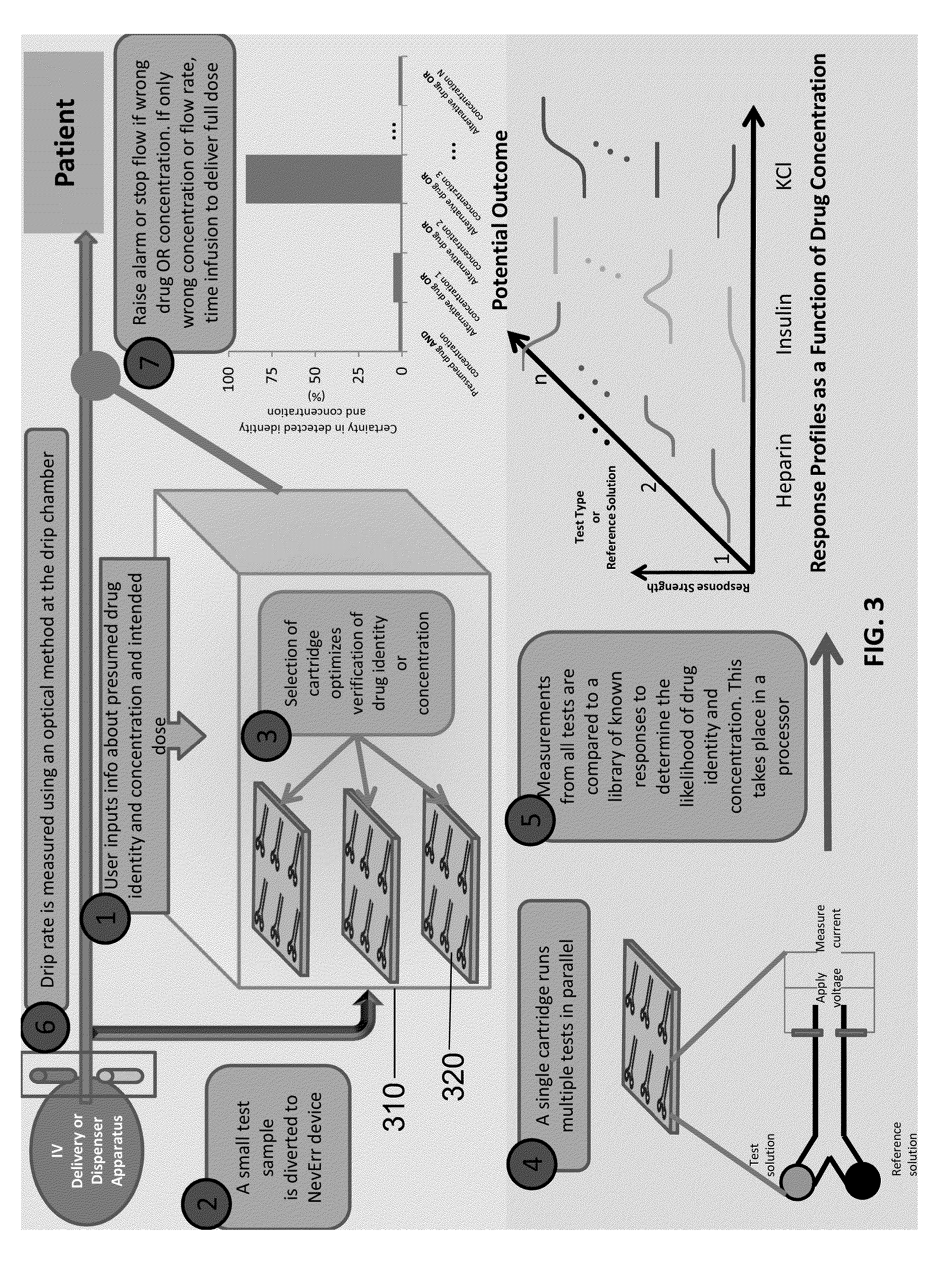Microfluidic analyte detection cartridge device, system and method
- Summary
- Abstract
- Description
- Claims
- Application Information
AI Technical Summary
Benefits of technology
Problems solved by technology
Method used
Image
Examples
example 1
[0094]In one embodiment, a heparin containing solution was distinguished from a control solution using a microfluidic cartridge. In this embodiment a microfluidic cartridge was fabricated by irreversibly bonding a layer of polydimethylsiloxane (PDMS) to a glass slide. Prior to bonding, a Y-shaped microchannel (100 μm diameter, 20 mm length) was molded in the PDMS layer. A pair of planar Pt / Pd electrodes was deposited on the surface of the glass slide with a gap of 90 μm between the electrodes. The PDMS and glass layers were aligned so that both electrode tips remained within the channel.
[0095]A calcium chloride solution was prepared by mixing 7.45 g of calcium chloride dehydrate in 10 mL of water to obtain a 5M concentration. The sample solution included either: (1) injectable saline (0.5 mL, 0.9% sodium chloride Injection, USP) or (2) heparin (500 IU) mixed in injectable saline (0.5 mL, 0.9% sodium chloride Injection, USP), i.e., roughly 100 times the concentration that would typic...
example 2
[0099]Different concentrations of heparin can be discriminated using the microfluidic cartridge and controlled laboratory tests of Example 1.
[0100]Referring to FIG. 5, three different test solutions were prepared: (1) heparin diluted in injectable saline at half the typical dose for a 100 lb patient; (2) heparin in saline at five times the typical dose for a 100 lb patient; or (3) injectable saline (0.5 mL, 0.9% sodium chloride Injection, USP). The reference solution was calcium chloride with a 100 mM concentration. Average currents in response to 2V pulses were: 0.96+ / −0.05, 0.68+ / −0.02, 0.46+ / −0.01 to for saline alone, 0.5× Heparin or 5× Heparin respectively. As demonstrated by FIG. 5, the microfluidic cartridge is capable of discriminating heparin solutions of different concentrations using a Ca2+ reference sample because each solution generates a significantly different current in the microfluidic cartridge.
example 3
[0101]The identity and concentration of some drugs can be detected by measuring changes in pH. For example, morphine is a natural base. Morphine increases the hydroxide ion (OH−) concentration in aqueous solutions. Using water as a reference solution produces measurable changes in pH upon mixing in a microfluidic channel. pH changes in proportion to the concentration of morphine.
[0102]In order to detect pH changes, a set of pH-sensing electrodes were positioned in the microfluidic channel (Stanton J W, Design and fabrication of a microfluidic electrochemical pH-stat, Master's Thesis, Case Western Reserve University, 2010). The pH-sensing electrodes comprise a thin metal film (palladium or iridium) with an oxide layer (palladium or iridium oxide) thermally grown on the surface. Changes in pH were detected as a change in voltage measured by the sensing electrodes.
[0103]The use of headings and sections in the application is not meant to limit the invention; each section can apply to an...
PUM
 Login to View More
Login to View More Abstract
Description
Claims
Application Information
 Login to View More
Login to View More - R&D Engineer
- R&D Manager
- IP Professional
- Industry Leading Data Capabilities
- Powerful AI technology
- Patent DNA Extraction
Browse by: Latest US Patents, China's latest patents, Technical Efficacy Thesaurus, Application Domain, Technology Topic, Popular Technical Reports.
© 2024 PatSnap. All rights reserved.Legal|Privacy policy|Modern Slavery Act Transparency Statement|Sitemap|About US| Contact US: help@patsnap.com










